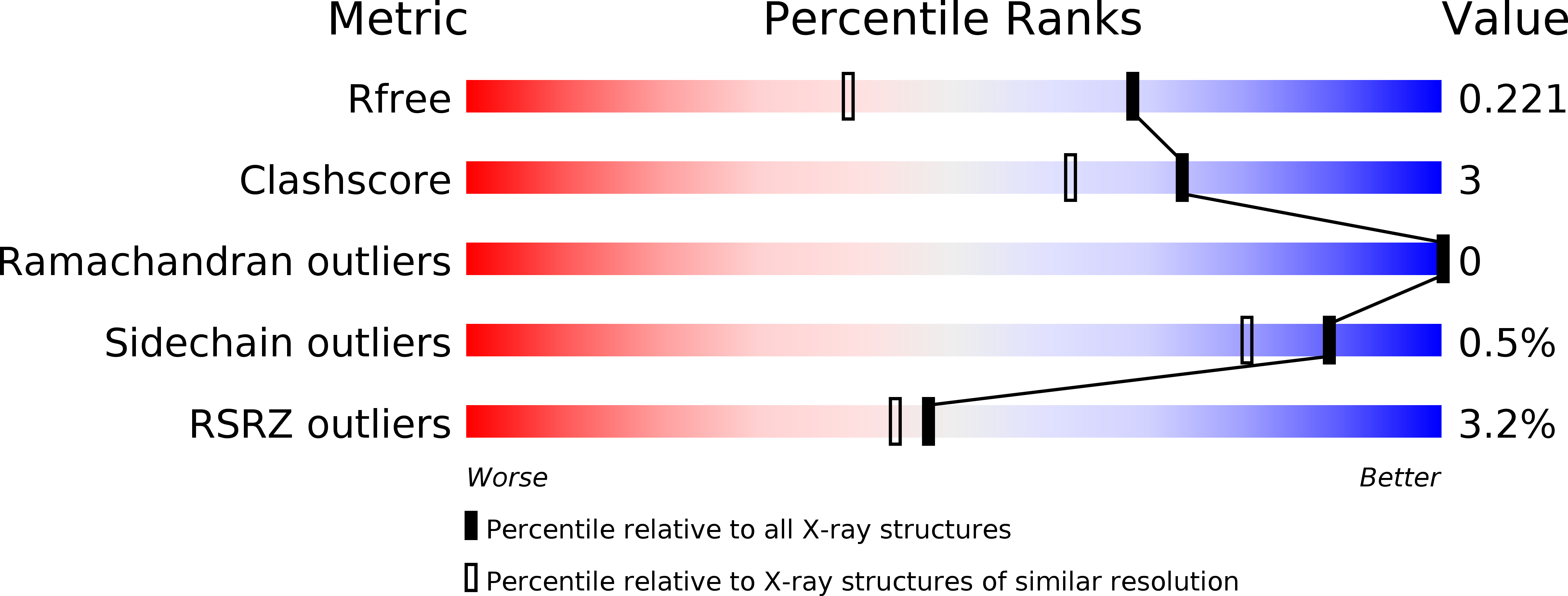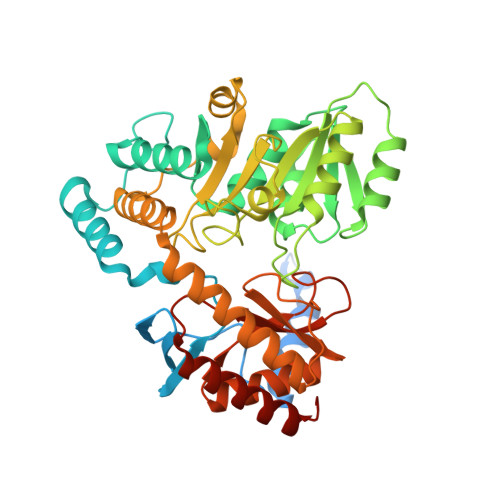The Chemical Basis of Serine Palmitoyltransferase Inhibition by Myriocin.
Wadsworth, J.M., Clarke, D.J., Mcmahon, S.A., Lowther, J.P., Beattie, A.E., Langridge-Smith, P.R.R., Broughton, H.B., Dunn, T.M., Naismith, J.H., Campopiano, D.J.(2013) J Am Chem Soc 135: 14276
- PubMed: 23957439
- DOI: https://doi.org/10.1021/ja4059876
- Primary Citation of Related Structures:
4BMK - PubMed Abstract:
Sphingolipids (SLs) are essential components of cellular membranes formed from the condensation of L-serine and a long-chain acyl thioester. This first step is catalyzed by the pyridoxal-5'-phosphate (PLP)-dependent enzyme serine palmitoyltransferase (SPT) which is a promising therapeutic target. The fungal natural product myriocin is a potent inhibitor of SPT and is widely used to block SL biosynthesis despite a lack of a detailed understanding of its molecular mechanism. By combining spectroscopy, mass spectrometry, X-ray crystallography, and kinetics, we have characterized the molecular details of SPT inhibition by myriocin. Myriocin initially forms an external aldimine with PLP at the active site, and a structure of the resulting co-complex explains its nanomolar affinity for the enzyme. This co-complex then catalytically degrades via an unexpected 'retro-aldol-like' cleavage mechanism to a C18 aldehyde which in turn acts as a suicide inhibitor of SPT by covalent modification of the essential catalytic lysine. This surprising dual mechanism of inhibition rationalizes the extraordinary potency and longevity of myriocin inhibition.
Organizational Affiliation:
School of Chemistry, The University of Edinburgh , Edinburgh, Scotland, EH9 3JJ, United Kingdom.



















